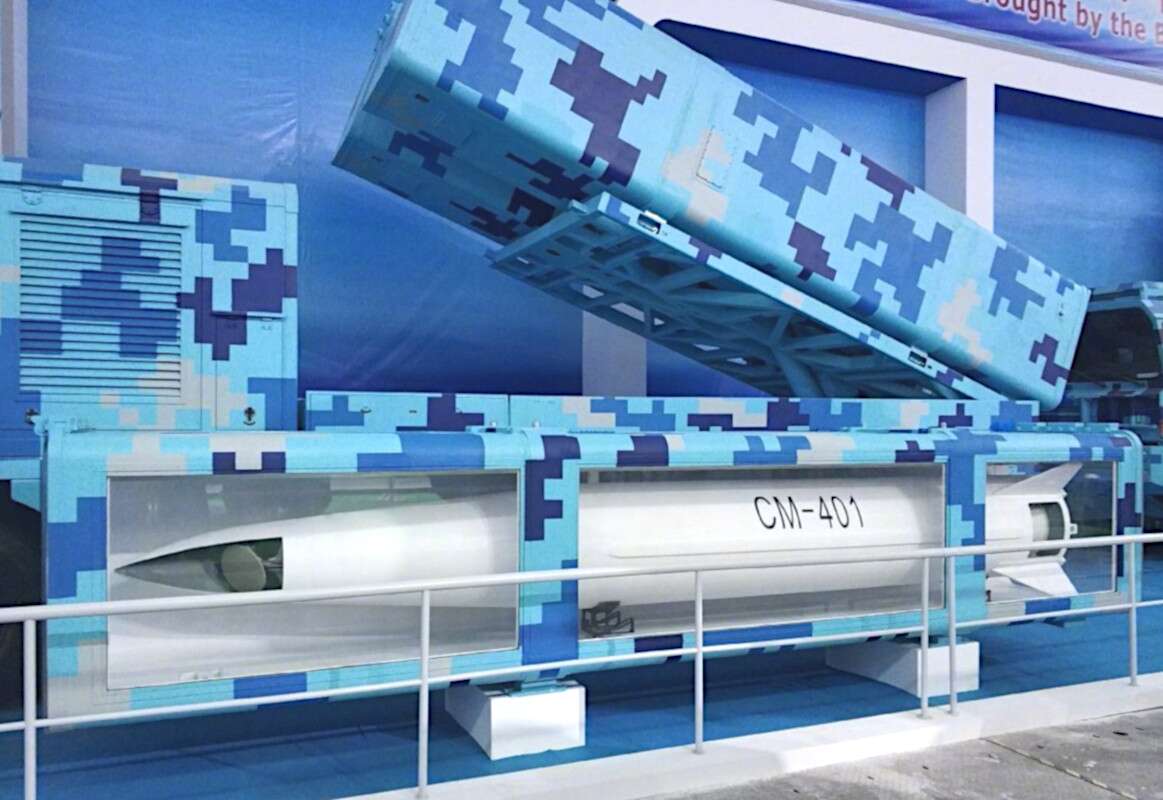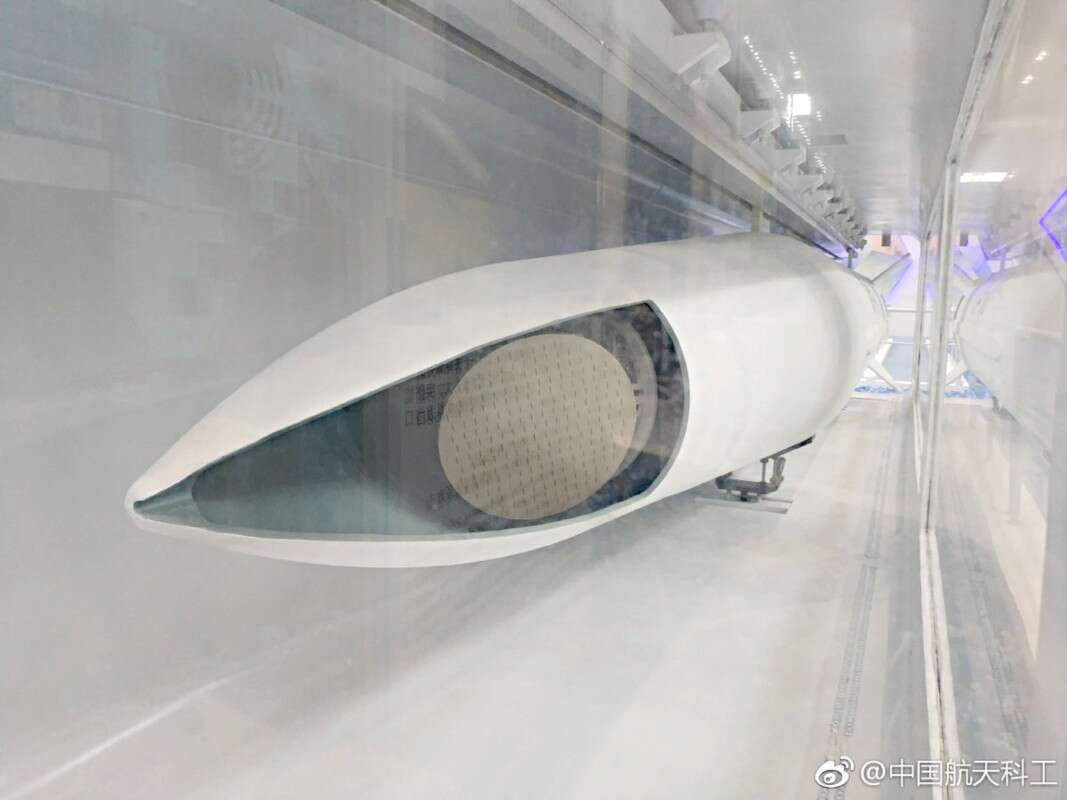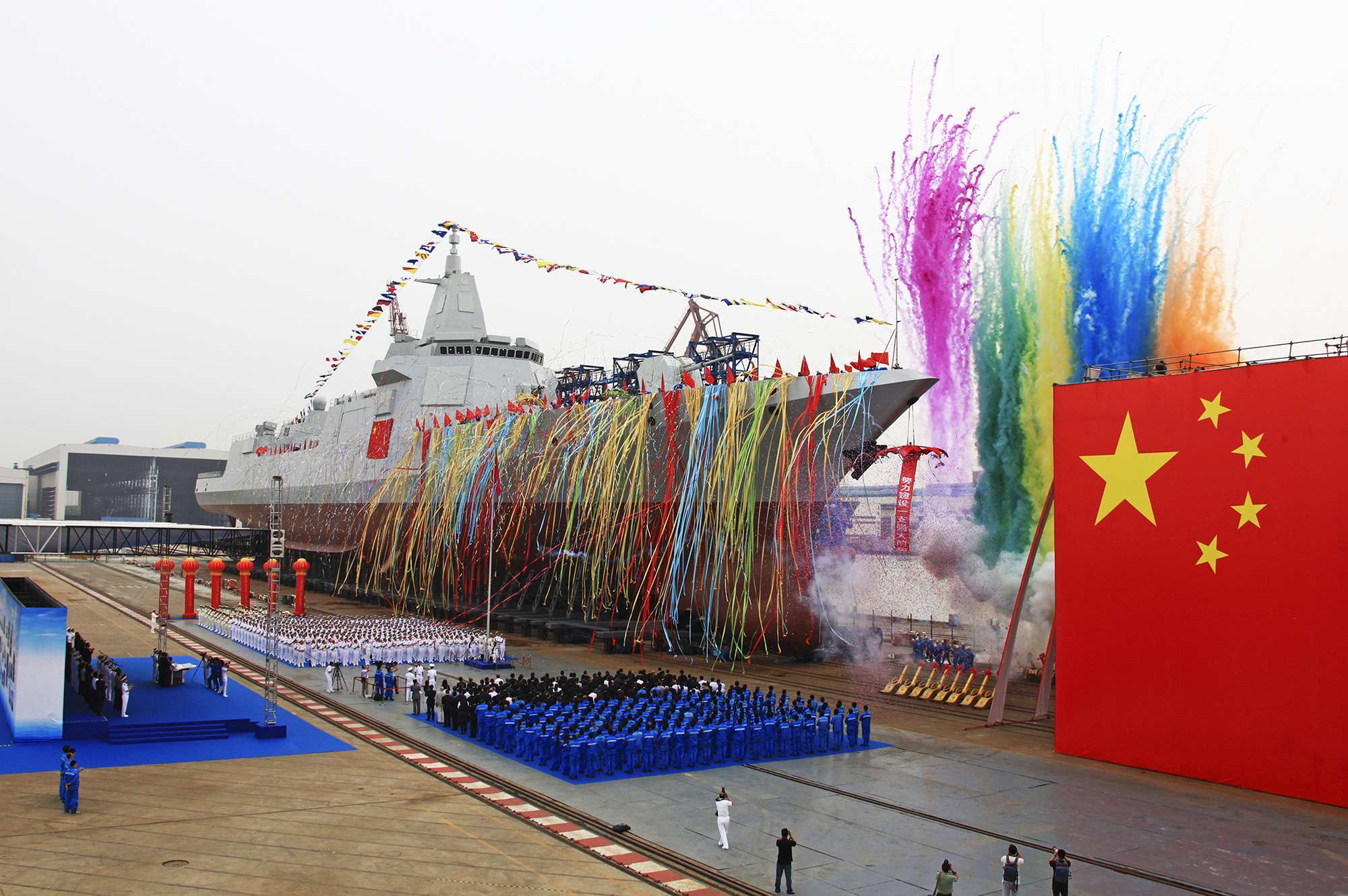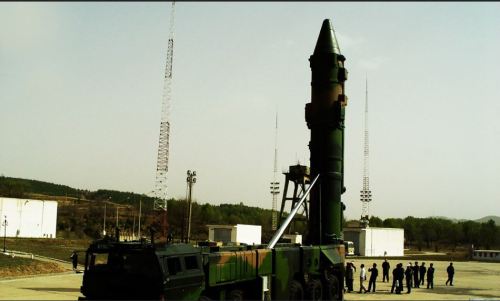China Reveals Short-Range Anti-Ship Ballistic Missile Designed To Dodge Enemy Defenses
The Chinese have their own plans to use the missiles on land and at sea, but also hope to court foreign buyers
November 5, 2018

China is hardly a stranger to developing medium- and intermediate-range
anti-ship ballistic missiles with maneuvering warheads to help exert authority over
its broad territorial claims and deny opponents
access to wide areas during
potential regional conflicts. Now the Chinese have unveiled a new, short-range ballistic missile that could arm shore batteries, its future
Type 055 destroyers, and make its way onto the export market as well.
The state-owned China Aerospace Science and Industry Corporation (CASIC) publicly unveiled the new missile,
called the CM-401, at the biennial
Zhuhai Airshow, which officially kicked off on Nov. 6, 2018, and also serves as a general arms expo. CASIC had two launch platforms on display at the event, an 8x8 truck-mounted type with two missiles inside self-contained launch canisters and what appeared to be a deck launcher for ships, also with two self-contained missiles.
There are few detailed specifics about the weapon and its launchers so far, but
observers believe that the missile itself has a maximum diameter of approximately 2.8 feet. This is similar to that of the Russian
Iskander-M quasi-ballistic missile. The CM-401's general shape looks similar to Russia's missile, but it appears to be smaller overall.
The diameter estimate is based on the known dimensions of CASIC’s
YJ-62/C-602 ground-launched cruise missile and its associated launch platform. The company had put one of these weapon systems on display right behind the CM-401.
 A Chinese graphic showing a ballistic missile with a skip-glide trajectory associated with the CM-401.
A Chinese graphic showing a ballistic missile with a skip-glide trajectory associated with the CM-401.
Per CASIC’s display, their new missile has a minimum range of around nine miles and a maximum range of just over 180 miles. This puts it firmly in the short-range ballistic missile (SRBM) category, which typically refers to any such weapon with a range of fewer than 620 miles. The U.S. military also uses the term “close-range ballistic missile” (CRBM) to cover weapons with a range of fewer than 186 miles.
Graphics associated with the CM-401 suggest it has a “porpoising” or
“skip-glide” trajectory that involves the warhead abruptly pulling up at least once as it begins the terminal stage of its flight. This maneuver could extend the range of a ballistic weapon, but has only ever been used to give the warhead a much
more irregular flight path and allow it to adjust its course.

This, in turn, makes it harder for an opponent to try and intercept the warhead. The CM-401’s terminal speed, which CASIC says is between Mach 4 and 6, would also help it break through enemy defenses to reach its target. The launch platform reportedly has the ability to fire its two missiles on different trajectories against either one or two targets at once, again increasing the difficulty for the defender to respond to the incoming threat.
This maneuvering capability is also what allows the warhead to engage large, relatively slow-moving targets, such as
aircraft carriers and other major surface
combatant and logistics ships. A cutaway of the mockup CM-401 missile that CASIC showed off at Zhuhai shows what appears to be a phased array radar in the nose so that the warhead can actively home in on those types of targets during its terminal phase.
 The CM-401 missile mockup, with a cutaway showing what appears to be a phased array radar in the nose.
The CM-401 missile mockup, with a cutaway showing what appears to be a phased array radar in the nose.
CASIC says that the CM-401 has a secondary land attack function that could benefit from its defense-breaking maneuvering capability, as well. This could be particularly beneficial for ship-launched versions, giving the weapon added flexibility over existing, dedicated anti-ship and land-attack cruise missiles.
The display at Zhuhai suggested the missile could be a future part of the arsenal on board China’s
Type 055 destroyers, which are already a modern and capable design that you can read about in more detail
here. There is no indication about how many two-missile launchers each ship might carry or whether the vessels might employ an entirely different launch system, such as a vertical launcher.
There are also questions given the missile’s size, shape, and skip-glide trajectory about whether the stated maximum range truly reflects the weapon’s actual capabilities.
Some observers have indicated that the CM-401, or a variant thereof, might actually be able to reach targets close to 620 miles away, though this seems unlikely given the missile's size. That doesn't mean the weapon might not be able to fly further than 180 or so miles, though.
The reason China might want to understate its range would have to do with the
Missile Technology Control Regime (MTCR), a voluntary arrangement between 35 different countries not to export missiles that can carry a 1,100 pound payload more than 186 miles away. The Chinese government is not a formal party to this agreement, but has said on numerous occasions that it
still follows these guidelines as a matter of state policy.
 China's first Type 055 destroyer at its launcher ceremony.
China's first Type 055 destroyer at its launcher ceremony.
If the specifics are accurate, the CM-401 would be exportable under the MTCR’s limitations. It is also possible that CASIC could make export variants with deliberately reduced range, while providing the longer-range versions to the Chinese military itself.
Though it would have a shorter range than ground-launched
YJ-62 and YJ-12 supersonic anti-ship cruise missiles, the CM-401's higher terminal speed and ability to dodge enemy defenses would make it a valuable part of Chinese military’s layered anti-ship defenses, particularly in the South China Sea. Situated on any of China’s man-made islands in that region, the anti-ship ballistic missiles would be able to reach targets throughout much of the region.
Here is about what their anti-ship and anti-aircraft missile coverage may look like (from the article). I'd guessed that they'd deploy YJ-62 anti-ship missiles; it sounds like there are YJ-12's out there instead, which would have even a bit longer range than depicted.
pic.twitter.com/SXEDO8pIzQ
— Thomas Shugart (@tshugart3)
May 3, 2018
Launchers on the Chinese mainland would also be able to hit opponents in the East China Sea, where China has increasingly found itself at odds with Japan
over conflicting territorial claims. From those same positions, the CM-401s would be able to hit targets in
the Taiwan Strait and on the other
side of the island, further putting the Taiwanese Navy’s
limited surface combatants at risk. Very few countries have any sort of maritime ballistic missile defense capability at all.
Arming Type 055 destroyers, or other ships, with the CM-401s would only expand the Chinese military’s ability to bring their capabilities to bear in a conflict. It would open up entirely new potential vectors for attack and allow China to simply fire the weapons outside the
often narrow coverage area of an
opponent’s anti-missile defenses, to begin with.
If it turns out that the missiles do have a range of more than 600 miles, land- and sea-based examples would present an even more serious threat in every one of these scenarios. Ship-launched variants with greater range would also present a challenge for China’s opponents in
the Pacific region broadly and
possibly beyond as time goes on.
The development of
air-launched ballistic missiles is also becoming increasingly widespread, with China itself reportedly developing
an aerial version of the anti-ship variant of the DF-21 with a version of the
H-6 bomber as the launch platform. Russia has adapted the Iskander-M into an
air-launched anti-ship capable weapon that modified MiG-31 Foxhound interceptors can carry, as well. The CM-401 might prove to be a good starting place for a similar aerial missile.
 Chinese DF-21D anti-ship ballistic missiles on more common road-mobile transporter-erector-launchers.
Chinese DF-21D anti-ship ballistic missiles on more common road-mobile transporter-erector-launchers.
There are a number of foreign customers that could be interested in an MTCR-compliant variant, too. The most obvious is China’s long-time ally Pakistan, which faces
a standing numerical disadvantage in ships against its most likely regional opponent, India.
The Indian Navy is hoping to get its second aircraft carrier
by 2023 and is planning to build a third some time afterward. Pakistani land-based CM-401s could force those ships to operate further offshore during a crisis and Pakistan’s ships armed with these missiles could present a new type of threat to India’s capital ships.
Another possible export customer might be Saudi Arabia, which has bought Chinese
DF-3 ballistic missiles in the past and has reportedly at least looked into buying
more modern DF-21s in recent years. The cramped confines
of the Persian Gulf mean would make the CM-401 a formidable weapon against ships and targets on land in any potential skirmish with Iran.
The CM-401 may reflect a larger growth in interest in this type of capability both within the Chinese military and among its foreign partners. The state-owned Chinese Aerospace and Technology Corporation (CASC) also brought an anti-ship missile, the A/MGG-20B, derived from its
DF-12/M20 short-range ballistic missile to Zhuhai, though there are few details about its exact capabilities.
Guangdong Hongda Mining Company also brought a model of its
HD-1 ramjet-powered high-supersonic anti-ship cruise missile to the airshow. The company claimed that it had test-fired the weapon, which they dubbed a “carrier killer” and uses a booster to get to the necessary for optimal operation of its solid-fueled integral rocket ramjet motor, for the first time
in October 2018.
The HD-1 appears to be primarily aimed at competing with the Russo-Indian
BrahMos on the export market, but it could also present an alternative to the lower supersonic
YJ-12 series. There are no independently verifiable details on which to judge Guangdong Hongda’s
claims that their missile is more capable and cheaper than the BrahMos.
In similar news, we finally have images of the HD-1 supersonic cruise missile, developed by a mining & blasting company (of all things). Unlike its competitor the YJ-12E/CM-302, the HD-1 requires an add-on solid booster.
pic.twitter.com/Rub7MOTXPU
— BZhRK (@BZhRK1)
November 5, 2018
All told, China looks to be aggressively exploring its options to expand its shore- and sea-based anti-ship missile capabilities as its military works to reinforce its various territorial claims spread out across the Pacific Ocean, otherwise assert its regional authority, and even take on an increasingly global role. The Chinese government is also clearly keen to find ways to make these weapons accessible to their allies and partners abroad.






 Reply With Quote
Reply With Quote














Bookmarks